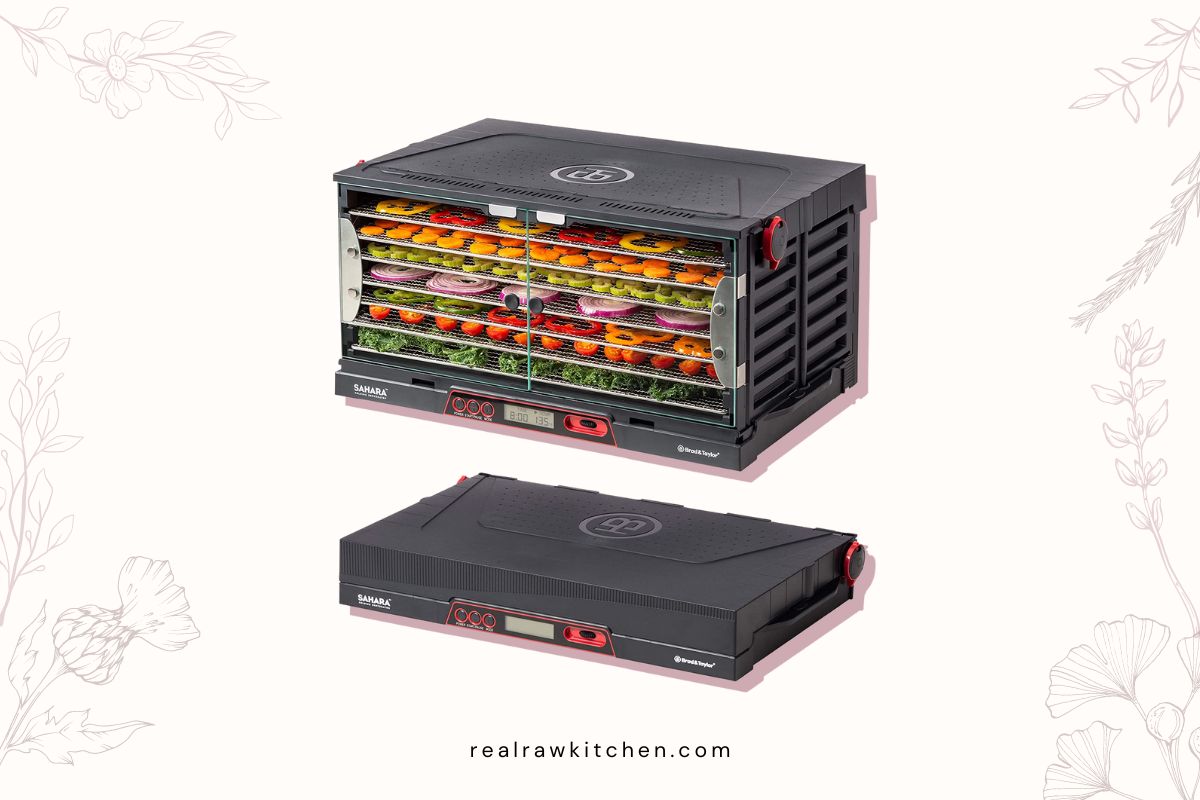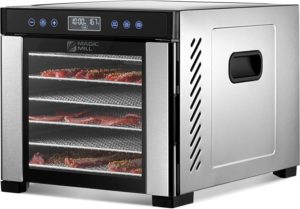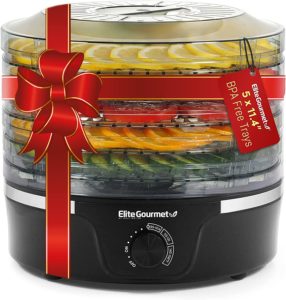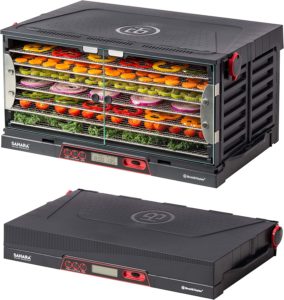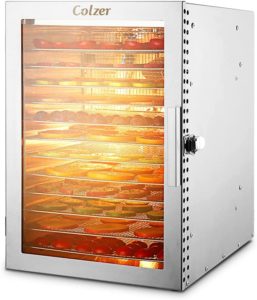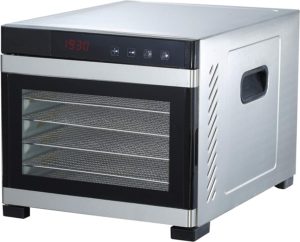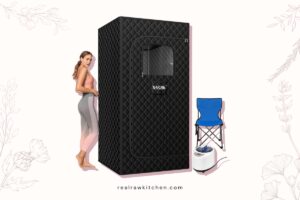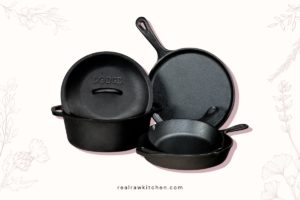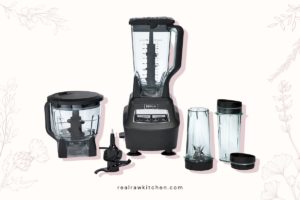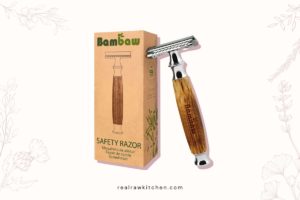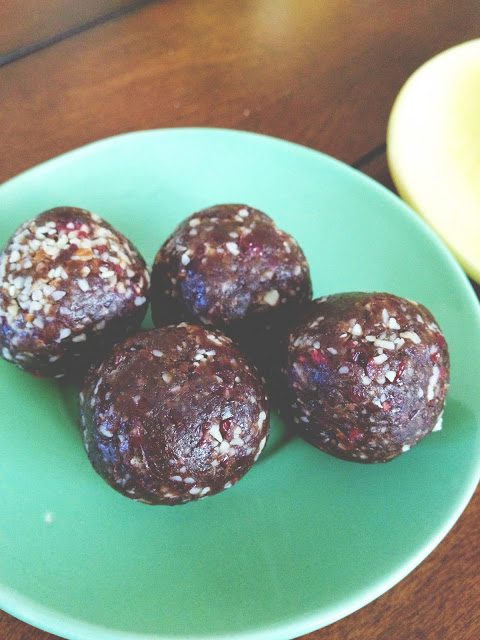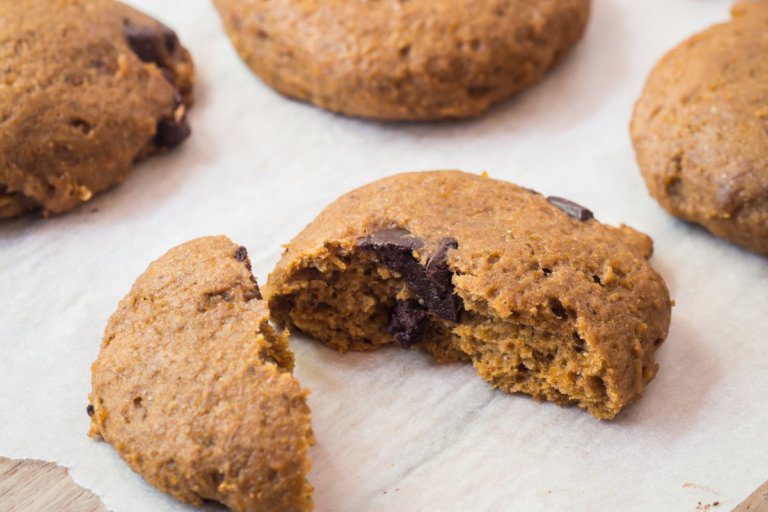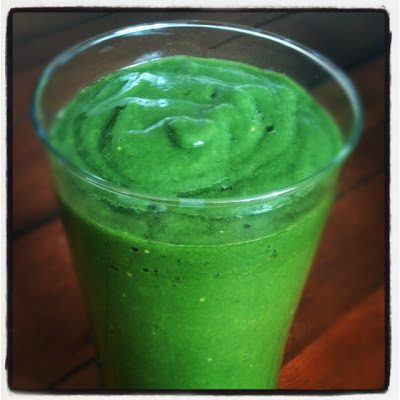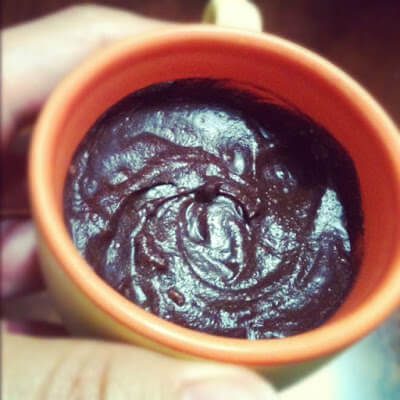The best food dehydrator is a quality machine that can handle anything you throw at it. A juicy mango, a crisp apple, or a chewy piece of beef jerky—you want your imagination to be the only limit. But today’s models come with so many bells and whistles that deciphering what you need from what you don’t can feel like a full-time job.
To help make your decision easier, I’ve done the digging for you and found the best food dehydrators on the market today.
| # | Preview | Product | |
|---|---|---|---|
| 1. | BEST OVERALL: Magic Mill Food Dehydrator | View on amazon | |
| 2. | BEST BANG FOR THE BUCK: Elite Gourmet Food Dehydrator | View on amazon | |
| 3. | BEST COMPACT: SAHARA Folding Food Dehydrator | View on amazon | |
| 4. | BEST LARGE-CAPACITY: Colzer Food Dehydrator | View on amazon | |
| 5. | BEST NOISE REDUCTION: Samson”Silent” Dehydrator | View on amazon |
My top picks
No need to spend hours researching different models—these are the best food dehydrators out there, no matter what you’re cooking up.
1. BEST OVERALL: Magic Mill Food Dehydrator
This powerhouse dehydrator hits all the marks—and then some.
Product Specs
- Watts: This dehydrator uses 600 watts.
- Material: This dehydrator is made out of food-grade stainless steel.
- Dimensions: This dehydrator is 15 inches by 13.5 inches by 19 inches.
Dehydrating food is kind of like getting a tattoo. Once you start, it’s hard to stop. And with Magic Mill’s spacious design and seven adjustable (and dishwasher-safe) drying trays, you don’t have to. Just pop in whatever you’re feeling—mangoes, sweet potatoes, beef jerky, herbs, fruit leathers—set the temperature and timer, and let it do its thing.
With a dehydrator this large, you might be worried about even heat distribution. But Magic Mill is designed with a rear-mounted fan to ensure that your food dries evenly and consistently without the need to rotate shelves. The best part? This dehydrator comes with additional modes to dehydrate faster, dehydrate raw meat and even keep your newly dried foods warm after they’re done.
Pros
- Seven dishwasher-safe drying racks
- Tons of temperature controls
- No need to rotate shelves
Cons
- On the expensive side
2. BEST BANG FOR THE BUCK: Elite Gourmet Food Dehydrator
You don’t need an expensive, restaurant-grade machine to enjoy your favorite dried snacks at home.
Product Specs
- Watts: This dehydrator uses 350 watts.
- Material: This dehydrator is made out of BPA-free plastic.
- Dimensions: This dehydrator is 12.4 inches by 11.7 inches by 11.6 inches.
Not everyone wants to spend hundreds of dollars to make their own beef jerky. If that sounds like you, the Elite Gourmet Food Dehydrator is a great, low-cost option that still offers plenty of features.
With five trays, an adjustable temperature dial, and an expandable height, this dehydrator is comparable in size and function to some of the more expensive options available. However, its heat source and fan are mounted to the base of the unit, so you’ll need to rotate the trays every few hours to ensure even drying.
While reviewers love the value and user-friendliness, there are a few complaints about its design. Some say that it’s hard to clean and that the trays are easy to break. So if you’re looking for a durable option that will last for years, you might want to keep browsing. But for a cost-effective, beginner-friendly dehydrator, this one can’t be beaten.
Pros
- Five stackable drying racks
- Adjustable temperature control
- Expandable height for taller foods
Cons
- May be hard to clean
- May need to rotate trays
3. BEST COMPACT: SAHARA Folding Food Dehydrator
Keep your kitchen counters clean and clutter-free with this innovative appliance that takes up less space than your coffee pot.
Product Specs
- Watts: This dehydrator uses 750 watts.
- Material: This dehydrator is made out of stainless steel.
- Dimensions: This dehydrator is 22 inches by 14 3/8 inches by 11 inches when open, and 22 inches by 12 1/4 inches by 3 3/4 inches when collapsed.
If you’re struggling with the idea of adding yet another kitchen appliance to your already full counters, then you’ll love the smart, compact design of the SAHARA Folding Food Dehydrator. Unlike the bulky box dehydrators, this one folds and collapses down to about a third of its size. So you can easily store it away in your pantry or a large drawer when you’re not using it. It even comes with a nylon carrying case to make transport a breeze.
But don’t let its small stature fool you. With five stackable shelves (coming in both polished stainless steel or molded polypropylene) and dual temperature controls that automatically lower to maintain nutrients, this dehydrator does not hold back. The timer even allows for up to 198 hours of continuous operation—taking the idea of “set it and forget it” to a whole new level.
Pros
- It’s easy to store
- Long automated drying time
- Has dual temperature controls
Cons
- It’s on the expensive side
4. BEST LARGE CAPACITY: Colzer Food Dehydrator
Make your favorite dried snacks in bulk with this high-capacity dehydrator.
Product Specs
- Watts: This dehydrator uses 800 watts.
- Material: This dehydrator is made out of stainless steel.
- Dimensions: This dehydrator is 16.2 inches by 12 inches by 17.3 inches.
Some of us were just born to host, and if you fall into the category of “most likely to bake treats for the entire neighborhood,” then you’ll want this massive dehydrator from Colzer in your corner.
For starters, it has more trays than you’ll know what to do with. You can choose between eight, 12, or a whopping 16 stainless steel racks (that are also dishwasher-safe, by the way), and know that the horizontal airflow will evenly dry all your goodies without you having to lift a finger.
This dehydrator also has a digital display panel with an adjustable thermostat (ranging from 68 to 194 degrees Fahrenheit) and a 24-hour timer that has an automatic shutdown feature. While reviewers love the insane dehydrating power this machine has, they also boast about its eerie lack of noise. At less than 50 decibels, running your Colzer overnight won’t disrupt your precious slumber.
Pros
- Can dehydrate large quantities
- Digital temperature and timer
- Produces low noise levels
Cons
- It’s on the expensive side
- Not ideal for small spaces
5. BEST NOISE REDUCTION: Samson”Silent” Dehydrator
If you’re looking for a dehydrator that won’t disrupt your peace and quiet, this machine from Samson has you covered.
Product Specs
- Watts: This dehydrator uses 600 watts.
- Material: This dehydrator is made out of stainless steel.
- Dimensions: This dehydrator is 7.75 inches by 13.5 inches by 12.5 inches.
No one wants to be jolted awake by the loud hum of a dehydrator—especially if you live in close quarters with others. That’s where the Samson “Silent” Dehydrator comes in clutch.
Promising to reduce noise while still maintaining all the convenient features of a standard device, this dehydrator is perfect for those who want to enjoy the benefits of dried foods without sacrificing their sanity. Reviewers are so grateful for the lack of noise, with one person even commenting: “I can just let it run for days on end, which I could never do with my previous two.”
And if you’re worried about the silent treatment impacting the quality of your snacks, don’t be. The Samson dehydrator uses a horizontal airflow system to evenly dry foods and comes with an impressive array of features, like an adjustable thermostat, digital timer, six stainless steel trays, and automatic shut-off.
Pros
- Has a low noise level
- Comes with six trays
- Digital timer and temperature control
Cons
- On the expensive side
- No decibel level listed
My verdict
All the dehydrators I’ve listed are the crème de la crème of what you’ll find online. But the real stars of the show are the Magic Mill Food Dehydrator and the Samson”Silent” Dehydrator. Both dehydrators offer plenty of trays, customizable controls, and even heat distribution.
What to know before you buy a home food dehydrator
Food dehydrators look more intimidating than your average appliance. But narrowing down the top-tier models from the total duds is actually pretty straightforward. Key features like temperature control, space, and the number of trays all influence how many sun-dried tomatoes and beef jerky sticks you can make—and how well they will taste.
So before you start loading up your Amazon cart, here’s everything you should consider before buying a home food dehydrator.
Types of dehydrators
Thanks to the ever-expanding global marketplace, you can find dehydrators in all shapes and sizes. However, these devices tend to come in three basic types: stackable (also called vertical), shelf (also called horizontal), and cabinet. While brands may market their models as versatile all-in-one devices, it’s important to know that each dehydrator type has its own set of pros and cons.
Stackable
Stackable or vertical dehydrators are the devices you’ll see the most. As their name suggests, they’re designed with stackable trays that sit one on top of the other. Every model is different, but heat generally flows from the top, and a fan sits at the bottom to circulate the air.
While stackable dehydrators are affordable, compact, and easy to expand by adding more trays, they’re not the most convenient option for drying thicker foods like beef jerky. Because the heat doesn’t spread equally throughout the device, you may have to rotate the trays to ensure everything dries evenly.
Shelf
Shelf or horizontal dehydrators also come with stackable trays, but they look—and function—more like conventional ovens. Both the heat source and the fan are tucked away in the back, behind the trays, which are enclosed in an outer case. This design allows for something that stackable dehydrators just can’t provide: uniform drying.
Unfortunately, horizontal dehydrators tend to be larger and more expensive than their vertical counterparts. But if you want a stress-free way to dry all sorts of delicious treats and snacks, they’re definitely worth the investment.
Cabinet
If you want a dehydrator that looks as good as it sucks the moisture out of your foods, go for a cabinet model. These devices look like cabinets or small refrigerators and come with all the bells and whistles, including automatic shut-off, humidity sensors, and digital controls.
Cabinet dehydrators are also the best option for commercial use and large-scale drying projects—like drying enough fruits and vegetables to last you all winter. Just know that they come with a high price tag, so they might not be the best choice for beginners.
Temperature control
There are two main elements that work together to dehydrate your food: heat and airflow. While all dehydrators come with a heating element, not all of them give you the ability to control the temperature. That’s why it’s important to look for a model with an adjustable thermostat that allows you to reach at least 160 degrees.
In addition to having a wide range of temperature options, you also want to make sure it comes with a timer. That way, you can set it and forget it without having to worry about coming back to burnt (or undercooked) food.
Capacity
You’ll want to make sure you have a model large enough to handle your annual holiday jerky or summer fruit snacks for the whole soccer team. Most devices will list the amount of food they can dehydrate at a single time (in pounds), and some even have the capacity to be expanded with additional trays for thinly sliced foods.
Just keep in mind that larger dehydrators tend to be more expensive and require more counter or storage space. If you’re tight on cash or kitchen real estate, it might be best to start small and upgrade down the road.
Noise reduction
Dehydrating food is a surprisingly noisy process. Even the best food dehydrator will make some amount of noise as it runs, so if you’re looking for a completely silent option, you’re out of luck.
Thankfully, newer models are making a concerted effort to reduce the amount of noise they produce. If you’re looking for a dehydrator that won’t drive you crazy, make sure to look for one that specifically mentions how quiet it is in the product description. It’ll probably still be on the same decibel level as a microwave, but it’ll be a step up.
What you can do with a food and fruit dehydrator
Who doesn’t love a spicy slab of beef jerky or a deliciously sweet slice of dried orange? If you’re a fan of dehydrated foods, then you know just how much flavor and nutrition they can pack. But many prepackaged options are loaded with unhealthy preservatives, additives, and sugar that can offset the benefits.
That’s where a food dehydrator comes in. By using low temperatures and circulated air, these devices can remove the water from your favorite fruits, vegetables, meats, and herbs without damaging their nutritional value. And best of all, many dried foods last up to two years in your pantry; perfect for those of us looking to reduce food waste.
Not only can you use a dehydrator to make your own healthy snacks, but you can also use it to create some pretty amazing dishes—even yogurt! So if you like to experiment in the kitchen or are simply looking for a way to extend the shelf-life of your favorite foods, then a food dehydrator is a great investment.
- They help maintain the nutritional value of your favorite foods.
- They reduce food waste.
- They are flexible and can be used for a variety of recipes.
Tips for maintaining a food dehydrator
Food dehydrators don’t come cheap. So if you’re going to invest in one, you’ll want to do everything in your power to make sure it lasts.
A high-quality machine will run for years if it’s well-maintained and regularly cleaned. Wiping down the inside of your dehydrator after each use will get rid of leftover smells, drippings, particles and residue and keep it functioning as it should. You can use a specialty cleaning agent specifically for dehydrators if you want, but a regular damp cloth will work just fine.
It’s also a good idea to soak the dehydrator trays in warm water every couple of uses. Some models even come with dishwasher-safe trays, so you can pop them in the dishwasher for a deep clean. If you can, let them fully air dry in the sun to prevent any bacteria growth.
- Wipe down the inside of the dehydrator with a damp cloth after each use.
- Soak the trays in warm water every now and then for a deeper clean.
- Let the trays completely air dry in the sun to avoid any bacterial growth.
FAQs
Learning how to dehydrate food can be a complex process—unless you have an in-house food dehydrator. These machines make it easy to create delicious, healthy snacks without all the fuss. But it’s normal to still have some questions about how they work and what you can do with them before you take the plunge and buy one.
What foods work well in a dehydrator?
You can throw just about anything in a dehydrator. Fruits, vegetables, lean meats, herbs, and even sauces can all be dried.
Is it worth buying a food dehydrator?
Absolutely—having a food dehydrator on hand is a game-changer. Not only will it help you save money and retain nutrients, but it’ll also help you reduce food waste.
Can you leave a dehydrator on overnight?
Yes, and you’ll likely have to. Foods take anywhere from eight to 16 hours to fully dry. Make sure the model you choose has an auto-shut-off feature for safety.
Sources:
https://insanelygoodrecipes.com/dehydrator-recipes/
https://www.homestratosphere.com/types-of-food-dehydrators/
https://www.vitality4life.co.uk/blog/benefits-of-a-food-dehydrator
https://www.healthline.com/nutrition/dried-fruit-good-or-bad#TOC_TITLE_HDR_9
https://www.dehydratorspot.com/how-to-clean-and-maintain-your-dehydrator/
